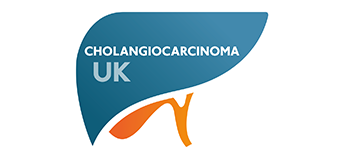Cholangiocarcinoma mortality higher than incidence?
The survival rate for cholangiocarcinoma is recognised to be extremely low, but how can mortality be higher than incidence?
The statistics in the recently published NCIN1/Cancer522 Rare and Less Common Cancers report show not only that the incidence of cholangiocarcinoma is increasing year on year, but also that the mortality figures for the years 2012 and 2013 are higher than the incidence. This is also reflected in the 4 year total, and was highlighted in the Executive Summary to the report:
“… Biliary tract cancers (cholangiocarcinoma/bile duct cancer (intra- or extrahepatic)) … have a higher mortality rate, incidence 3.58 vs mortality 3.64 per 100,000 population.”
The most probable reason …
The most probable reason for this is that these mortality figures are the inherited result of the pre-2010 confusion, when the incidence of cholangiocarcinoma was not separately recorded by pathologists but was included with hepatocellular carcinoma.
So, it is possible that while incidences of cholangiocarcinoma may not have been correctly recorded prior to 2010, the mortality may have been more accurately recorded in the following years – thus causing this seeming anomaly.
However, since clearer guidelines for pathologists* were published in 2010, more accurate figures should now be coming through.
AMMF’s report extract with cholangiocarcinoma data
AMMF has extracted the data for the Upper Gastrointestinal cancers, including cholangiocarcinoma, from NCIN’s workbook (available from NCIN’s website and which, at this stage, covers England only). This extract shows the ICD-10 coding3 used, incidence and mortality figures for the individual years 2010 to 2013, plus the male/female breakdown for incidence and mortality.
The statistics for cholangiocarcinoma have been grouped under the ICD-10 codings that were finally agreed during 2014 by NCIN’s Upper GI SSCRG4 – ie, C22.1, C24.0, C24.8 and C24.9, and are shown for the four years 2010 – 2013.
To read the Report extract, click here
To see the full Rare and Less Common Cancers publication, covering some 280 cancers, many for the first time, click here – and to see a report on AMMF’s involvement in this project, click here
The following is a summary of the cholangiocarcinoma statistics (for England only) as published in the NCIN/Cancer52 Rare and Less Common Cancers report:
2013, the latest year’s figures:
- Incidence – 1,965
- Mortality – 2,161
2010-2013 – 4 year totals:
- Incidence Male – 3,670
- Mortality Male – 3,526
- Incidence Female – 3,936
- Mortality Female – 4,217
Population rate (England):
- Incidence per 100,000 – 3.58
- Mortality per 100,000 – 3.64
* For information: Prior to 2010, there was confusion in the classification and recording of cholangiocarcinoma as the historical pathology classifications (pre WHO TNM 7th edition) ‘lumped’ cholangiocarcinomas with all the hepatocellular carcinomas. Since 2010 the WHO/TNM 7th edition has now separated these out and also listed cholangiocarcinoma separately as intra, hilar and extrahepatic, so the reporting of cases now should be far more accurate.
1NCIN (The National Cancer Intelligence Network) – Part of Public Health England, the NCIN is a UK-wide initiative, working to drive improvements in standards of cancer care and clinical outcomes by improving and using the information collected about cancer patients for analysis, publication and research. http://www.ncin.org.uk/home
2 Cancer52 – an alliance of some 80 of the rare and less common cancer organisations working to address inequality and improve outcomes for patients with these highly challenging diseases. AMMF is an active member of Cancer52, and Helen Morement is a board director. http://www.cancer52.org.uk/
3 ICD-10 – The International Classification of Disease tenth revision is a system of coding created by the World Health Organization that notes various medical records including diseases, symptoms, abnormal findings and external causes of injury. For cholangiocarcinoma codings, see: http://apps.who.int/classifications/icd10/browse/2015/en#/C22.1
4 SSCRGs (Site Specific Clinical Reference Groups) – To ensure that the data now available is used to improve clinical care, as well as to advise on what data needs to be collected and what analyses conducted, the NCIN has established twelve SSCRGs. For more information on SSCRGs, go to: http://www.ncin.org.uk/cancer_type_and_topic_specific_work/cancer_type_specific_work/sscrgs
June 2015







